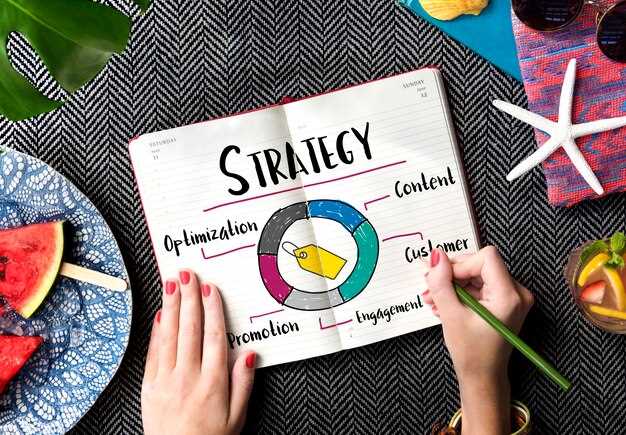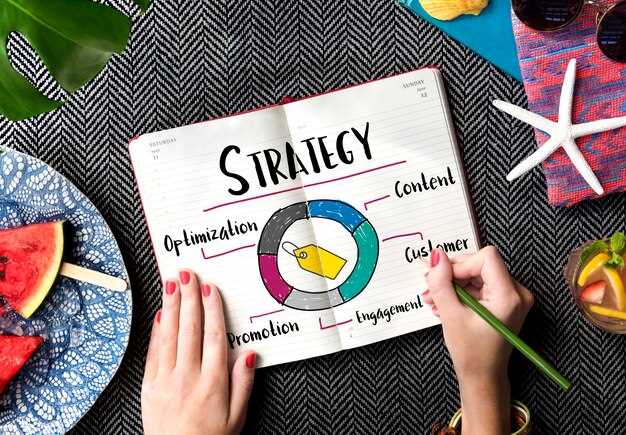Highlight your product’s unique selling proposition (USP) right from the first sentence. Instead of starting with generic introductions, jump straight into what makes your item different and desirable. This grabs the reader’s attention immediately and sets the stage for a compelling argument.
Utilize power words to elicit emotional responses. Words like “free,” “instant,” “secret,” and “guaranteed” can significantly impact how your audience perceives the value of your product. Craft sentences that speak directly to the benefits, rather than just the features, to forge a connection with the reader.
Incorporate testimonials and case studies to build trust. Real-life examples of satisfied customers provide social proof and lend credibility to your claims. Ensure these testimonials are concise and specific, demonstrating tangible results that past customers have achieved.
Create a sense of urgency to prompt immediate action. Limited-time offers or exclusive deals encourage readers to make quick decisions rather than delaying their purchase. Clearly articulate why acting now is advantageous, whether through time-limited discounts or product scarcity.
Conclude with a clear and compelling call to action (CTA). Avoid ambiguity by using direct and motivating language that guides the reader towards the next step. Whether it’s “Buy now” or “Claim your discount,” the CTA should leave no doubt in the reader’s mind about what to do next.
Crafting Compelling Headlines

Grab your audience’s attention instantly by focusing on powerful benefits. Start with an attention-grabbing element related to readers’ interests or challenges.
- Be Specific: Use direct language that leaves no room for ambiguity. Instead of “Increase Your Sales,” try “Boost Your Sales by 30% in 60 Days.”
- Create Curiosity: Pique interest without giving everything away. A headline like “The Secret Ingredient to Doubling Your Sales” triggers curiosity.
- Use Numbers and Data: Numbers give your headline authority. Phrases like “7 Reasons Why Your Copy Isn’t Converting” offer specific insights.
- Highlight Benefits: Clearly articulate what’s in it for them. Example: “Write Headlines That Convert with These Simple Steps.”
- Test for Success: Experiment with different headlines. Use A/B testing to determine which version resonates best with your audience.
Integrating these strategies will ensure your headlines captivate interest, driving more readers to engage with your content.
Understanding Audience Pain Points
Identify the specific problems that your audience faces by conducting thorough market research and engaging directly with your customers through surveys and interviews. Dive deep into forums, social media comments, and customer feedback to extract valuable insights about their challenges and frustrations. This approach will help you craft messages that resonate on a personal level, showcasing that you truly understand their needs and desires.
Once you’ve identified these pain points, prioritize the most significant ones that have a direct impact on their decision-making process. Address these issues head-on in your sales copy by illustrating how your product or service offers tailored solutions. Use relatable scenarios and language that mirrors your audience’s experiences to create a strong emotional connection.
Focus not only on the immediate benefit but also on the long-term transformation that your solution provides. This helps your audience see the value in investment, fostering a sense of trust and reliability. Also, incorporate testimonials and case studies where your solutions have effectively resolved similar pain points for others, adding a layer of credibility to your message.
Ensure that your sales copy maintains clarity and directness by avoiding jargon and complex terms that could alienate your audience. Use concise, impactful language that guides the reader effortlessly through your message, ultimately positioning your offering as the definitive choice for resolving their most pressing issues.
Explore methods for identifying and addressing the specific challenges your audience faces.
Conduct direct interviews with your customers to gather firsthand insights into their struggles. Ask specific questions about what hinders their success. Use surveys or questionnaires to collect data on a larger scale, which allows you to identify common patterns. Segment your audience based on these surveys to tailor your solutions effectively.
Utilize social media platforms to monitor discussions related to your industry. Pay attention to the language and sentiments expressed by your audience. Engage in forums and online communities to understand their challenges deeper. Create a list of frequently mentioned problems and use these insights to shape your sales copy.
Analyze customer support interactions. Review emails, chat logs, and support tickets to identify recurring issues. This data often reveals pain points not mentioned publicly. Address these concerns directly in your sales copies to reassure potential customers that you understand and can solve their problems.
Implement tools like Google Analytics to track user behavior on your website. Notice which pages have high exit rates and consider why visitors are leaving. Use heatmaps to observe where users click and how far they scroll, giving clues about their interests and frustrations.
Collaborate with your sales team to gather insights from their interactions with prospects. Sales professionals often have a unique perspective on customer challenges, providing valuable input for crafting compelling sales copy. Incorporate this feedback to connect authentically with your audience.
Incorporating Power Words
Ignite interest and drive action by integrating power words into your sales copy. These emotionally charged words have a strong impact and encourage readers to engage with your content.
- Highlight Benefits: Use words like “boost,” “transform,” or “enhance” to underscore the advantages a product offers, creating a vivid image of its potential in the reader’s mind.
- Create Urgency: Incorporate terms such as “limited,” “exclusive,” or “now” to instill a sense of urgency, prompting swift action to avoid missing out.
- Build Trust: Invoke credibility and reliability with words like “proven,” “guaranteed,” or “certified,” reinforcing the trustworthiness of your product or service.
- Evoke Curiosity: Utilize words like “discover,” “uncover,” or “secret” to tap into the reader’s natural curiosity, encouraging further exploration of your offerings.
- Emphasize Value: Communicate worth and cost-effectiveness with terms such as “bargain,” “deal,” or “invest,” reassuring the reader of the tangible benefits they’ll receive.
Maximize the impact by strategically placing these power words in headlines, calls to action, and bullet points. Adjust your vocabulary based on your target audience’s preferences for a highly personalized experience.
Discuss the psychology behind power words and how they can grab attention and elicit action.
Utilize power words like “exclusive,” “instant,” and “guaranteed” to capture the reader’s attention immediately. These words trigger emotional responses, making the viewer more likely to engage with your content. For instance, “exclusive” creates a sense of scarcity, compelling the reader to act quickly to avoid missing out. “Instant” taps into the desire for immediate gratification, promising quick results or benefits.
Incorporate power words into headlines and calls-to-action (CTA). A headline reading, “Join Our Exclusive Webinar for Instant Tips” promises unique value and immediate rewards, compelling more sign-ups. Similarly, CTAs that say “Get Your Free Trial Now” versus “Sign Up” leverage the strength of “free” and “now,” inviting prospective customers to act quickly without any perceived risk.
Understand that power words operate on a psychological level. They bypass logical processing and target emotions, crucial for decision-making. A subtle shift from “Buy” to “Own” in your sales copy can transform the customer’s mindset, shifting the perspective from a simple transaction to owning a valuable asset, increasing the likelihood of a positive buying decision.
Experimenting with different power words in various contexts helps identify the most impactful combinations for your specific audience. A/B testing your sales copy with different power words allows you to hone in on what works best, tailoring your approach to maximize conversion rates effectively.
Using Numbers and Statistics
Boost your sales copy by incorporating specific numbers and statistics to foster trust and clarity. Highlight exact figures such as “increase conversion rates by 35%” rather than vague terms like “significant improvement.” Concrete data provides tangible proof of your product’s benefits, making your claims more credible and persuading the reader.
When illustrating benefits, consider using precise data from reputable sources. For instance, if your product helps reduce costs, specify the percentage saved or the exact dollar amount. This clarity not only attracts attention but cements confidence in potential customers, encouraging them to commit to a purchase.
Utilize statistics to support your claims and provide context. For instance, “87% of our users reported improved performance within the first month” leverages social proof and can significantly enhance engagement. Data helps address potential objections by demonstrating your thorough understanding of your product’s impact.
Ensure that your statistics are up-to-date and relevant to the audience you’re addressing. Outdated or irrelevant numbers can diminish trust. Regularly update the data in your copy, reflecting the current state of your product’s efficiency and impact.
Incorporating numbers and statistics effectively demands precision and authenticity, ensuring your message resonates with clarity and authority. The aim is to inform and persuade, using well-chosen data to transform skeptical visitors into confident customers.
Learn how quantitative data can enhance the credibility of your headlines.
Integrate specific numbers to persuade your audience more effectively. Using precise statistics or percentages can fortify your headline. For instance, saying “Boost Your Sales By 20% in 30 Days” is more impactful than “Boost Your Sales Fast.” Quantitative data adds a layer of trustworthiness and tangibility that abstract phrases cannot achieve.
When crafting headlines, consider incorporating research findings, survey results, or case studies. A headline like “9 Out of 10 Customers Prefer Our Product” immediately provides a solid foundation for your argument, as it implies a tested and verified preference.
Use numbers to frame time or financial savings, which are often compelling motivators. Headlines such as “Save 50 Hours a Month with Our Solution” or “Reduce Costs by 15% with Our Strategy” deliver clear benefits that prompt action.
Ensure that your data is specific and relevant to your target audience. Tailor your numbers to resonate with the reader’s needs or aspirations. The more pertinent the statistic, the higher the likelihood of engagement and conversion. Leveraging precise data creates not only stronger headlines but also elevates your entire sales message.
Testing Headlines A/B for Best Results
Focus on creating two distinct headline versions to determine the most persuasive option. One approach is to craft a headline that highlights an emotional trigger, while the other version emphasizes a practical benefit. For instance, compare a headline that evokes curiosity, such as “Discover the Secret to Doubling Your Sales,” with one that clearly states an advantage, like “Increase Your Sales by 50% with Our Proven Method.”
Record and compare key metrics like click-through rates and conversion rates. Analyze which headline generates more engagement and leads to higher conversions. This data-driven approach allows you to refine headlines based on real user behavior rather than assumptions.
Limit testing variables to just the headline for accurate results. Changing multiple elements can complicate analysis and dilute findings. Use tools like Google Optimize or Optimizely to easily set up and track A/B tests, ensuring a scientific methodology. Implement the winning headline in your sales copy to maximize impact and drive higher conversion rates.
Explain the importance of A/B testing and how to implement it for headline optimization.
A/B testing serves as an invaluable tool for optimizing headlines, directly influencing the conversion rates of your sales copy. Start with creating two versions of your headline–one original and one variant. Share these headlines equally across your audience using a software tool or marketing platform that supports A/B testing.
Measure the effectiveness not only by click-through rates but also conversion metrics to ensure comprehensive insights. To gain statistically significant results, let the test run long enough, considering the volume of traffic your page typically receives. This period is crucial to avoid premature conclusions. Analyze which version results in more engagements and conversions. Make data-driven decisions to refine your communication strategies.
Iterate based on findings. If neither headline performs exceptionally well, create a new variation and test again. Consistent testing helps adapt to audience preferences and improve sales outcomes.
Engaging and Persuasive Body Copy

Craft each sentence to reflect the needs and desires of your audience. Start by addressing their pain points succinctly. Use vivid language to paint a picture of transformation, guiding them through the benefits they’ll experience.
Next, integrate short anecdotes or testimonials to build trust. Real-life examples resonate more effectively, creating a connection beyond mere words. Highlight unique features with specificity, showing exactly why your product or service stands out.
Leverage the power of action-oriented language. Words like “discover,” “join,” and “experience” prompt readers towards action, reducing hesitation. Implement social proof strategically, as it reassures potential clients about their decision.
Maintain clarity with concise paragraphs and an easy-to-scan layout. Lists or bullet points can help break down complicated information, making it more digestible.
| Strategy | Outcome |
|---|---|
| Use of Action Words | Increases Engagement |
| Incorporating Testimonials | Builds Trust |
| Highlight Unique Features | Differentiates Product |
| Social Proof Introduction | Reassures Potential Clients |
Finally, conclude with a strong call to action. Make it persuasive and urgent, inviting readers to act now. Whether it’s signing up, purchasing, or contacting, a compelling call to action is the bridge between interest and decision.
Video:

15 Pro Tips for Writing High-Converting Sales Copy
15 Pro Tips for Writing High-Converting Sales Copy
Q&A:
What are some strategies to make sales copy more persuasive?
To craft persuasive sales copy, it is important to clearly know your target audience and their desires. Use language that speaks directly to their needs and emotions. Incorporate storytelling to create a relatable narrative, and leverage social proof such as testimonials or case studies to build credibility. Strong calls-to-action and highlighting unique selling points can also enhance persuasiveness.
How can I write a compelling headline for my sales copy?
A compelling headline should grab attention and provide a clear benefit to the reader. Use action-oriented language and consider posing a question or stating a surprising fact. Keep it concise and ensure it aligns with the main message of your copy. Testing different headlines with your audience can also help determine which is most effective.
Why is understanding the target audience important in sales copy?
Understanding the target audience is critical because it allows you to tailor your message to resonate with those who are most likely to purchase your product or service. By knowing their demographics, interests, pain points, and desires, you can craft copy that speaks directly to their needs, leading to higher engagement and conversion rates.
Are there any common mistakes to avoid in sales copywriting?
Yes, several common mistakes can undermine sales copy. Overloading the copy with jargon or overly complicated language can alienate readers. Focusing solely on features rather than benefits is another common pitfall. Additionally, lacking a clear call-to-action or failing to prioritize the needs of the audience can reduce the effectiveness of the message.
How important is it to include a call-to-action in sales copy?
Including a call-to-action (CTA) is very important as it guides the reader on what to do next. A well-crafted CTA can create a sense of urgency or excitement that compels the audience to act. It should be clear, direct, and easy to follow, whether it invites the reader to make a purchase, sign up for a newsletter, or contact for more information.

